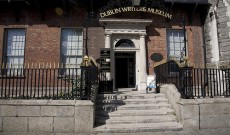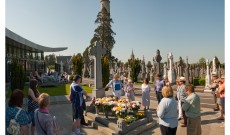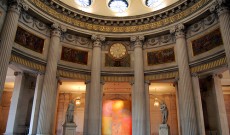- Home
- Places to Stay
- Cities
- Northern Ireland
- Ireland
- Places to See
- Northern Ireland
- Northern Ireland by Region
- Ireland
- Ireland by Region
- Places to Eat & Drink
- Cities
- Northern Ireland
- Ireland
- Editor’s Picks
- Blog & News
- Feature YOUR Business Here
Dublin Writer’s Museum

Dublin is famous as a city of writers and literature, and the Dublin Writers Museum is an essential visit for anyone who wants to discover, explore, or simply enjoy Dublin’s immense literary heritage.
Dalkey Castle & Heritage Centre

How do these odd Irish Tudors prepare for a feast, perform their ablutions, use weaponry or cure illness and disease? Examine the Tudor toilet facilities! See the Tudor equivalent of toilet roll and be disgusted!
The National Library of Ireland

Established in 1877, the National Library’s holdings are the most comprehensive collection of Irish documentary material in the world.
Glasnevin Cemetery

Glasnevin Cemetery is the largest cemetery in Ireland. First opened in 1832 to establish a place where people of all religions could bury their dead with dignity, the cemetery has grown to become a national monument and vital part of the Irish Heritage story.
The Ha’penny Bridge

This is the best known of Dublin’s bridges. Originally named the Liffey Bridge it is now called the Ha’penny because until 1919 to cross it there was a half-penny charge.
Dublin City Hall

City Hall is an outstanding example of the Georgian architecture for which Dublin is world-renowned. Talks on the history of City Hall are available to groups who arrange in advance. Audio guides and leaflets are available in several different languages. The building is fully wheelchair accessible.
Editors Picks

Antrim Town
Antrim is the county town of County Antrim in Northern Ireland. Antrim is a small town not frequently visited by tourists, yet it is one of the more historic towns in Northern Ireland with many interesting sights and buildings of historic note.














 Helped by Giant
Helped by Giant